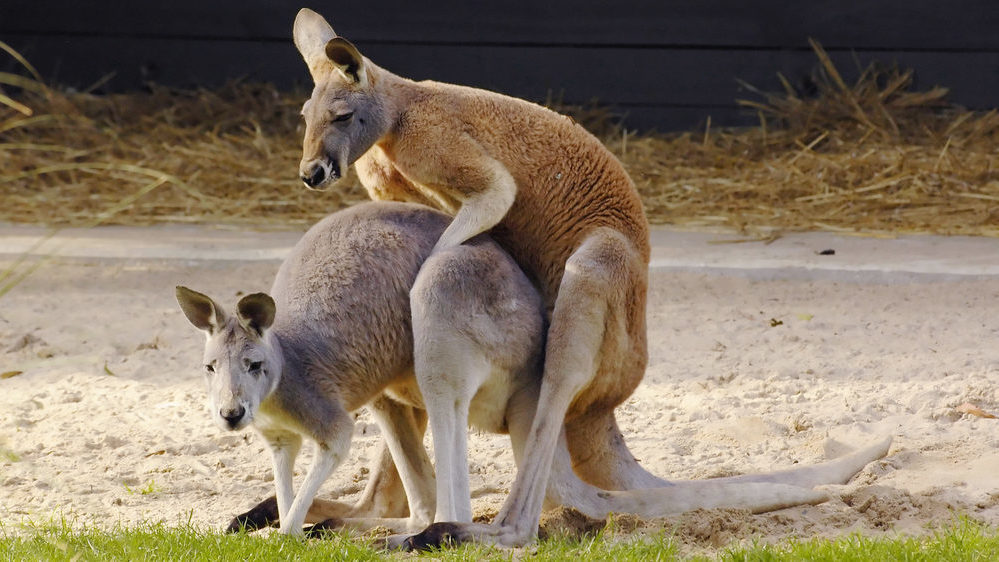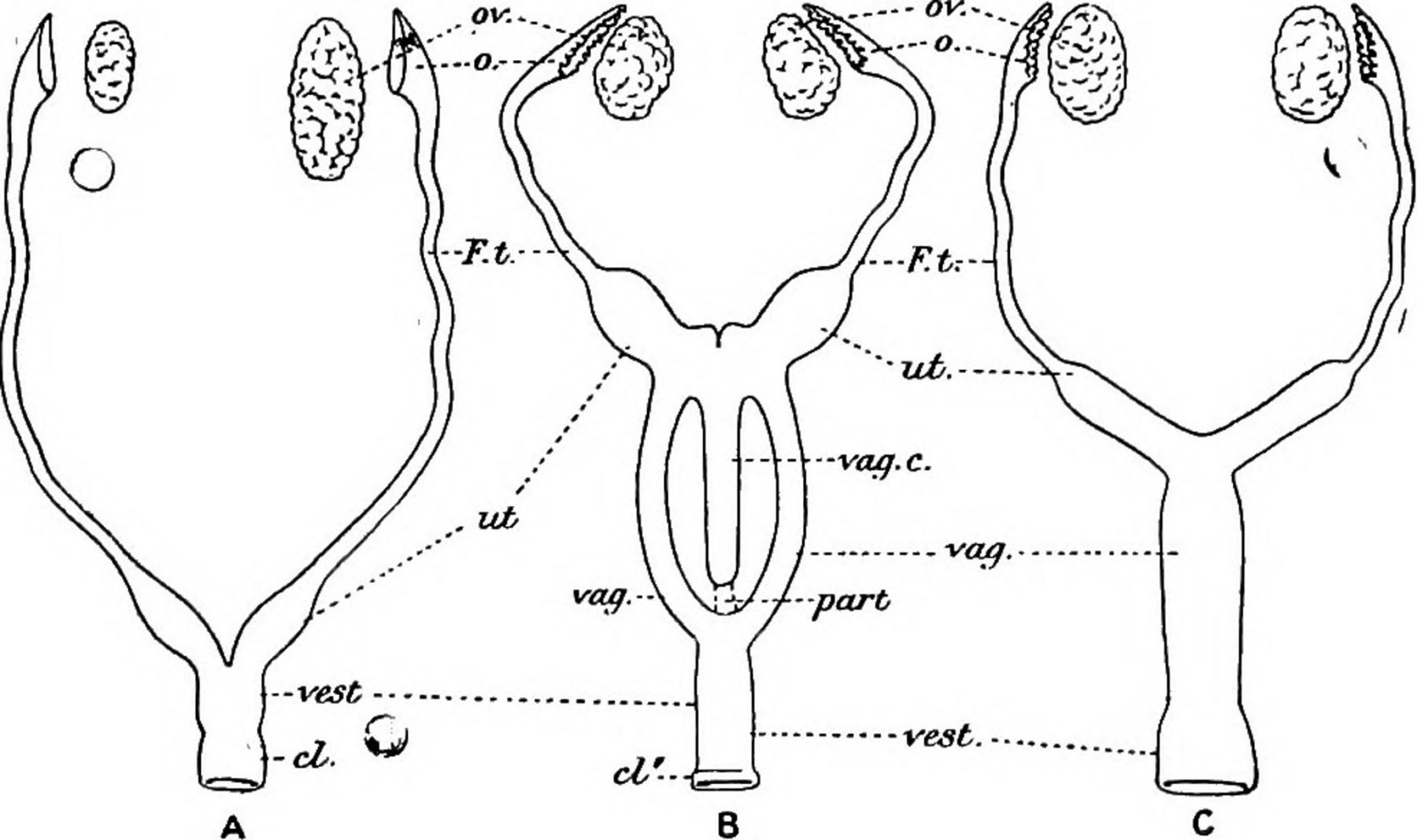Did you know kangaroos have three vaginas?

Kangaroos. They’re a national icon. A symbol of Australia. One takes pride of place on our coat of arms. One forms the logo of our national airline. Our soccer team are named in their honour.
They’re as familiar to Australians as an animal can get. So, why then, do most of us not know that THEY HAVE THREE VAGINAS!?
I myself only found this out a week ago when a colleague brought the bizarre fact to my attention.
Embarrassed by this gap in my knowledge, I sheepishly reached out to macropod expert, Dr Mark Eldridge, Principal Research Scientist at the Australian Museum, to find out more.
It turns out I shouldn’t have been embarrassed about not knowing.
“It’s not widely known, most people would have no idea,” Mark assures me.
“It just shows how remarkable mammals and marsupials are – how they do things completely differently.”
To explain this difference, let’s start with the female reproductive system we are most familiar with – that of humans.
Humans – and other mammals that have placentas – belong to a group called ‘eutherians’.
“In eutherian mammals you have a central fused vagina and a single fused uterus, which then goes up into the two fallopian tubes and up to each ovary,” Mark explains.
“And the ureters – that pass the urine from the kidneys down to the bladder – pass around the outside of the uterus.
“So we’re very familiar with that arrangement.”
Where kangaroos – and most marsupials – differ is that instead of having a single vagina and uterus, they have two completely separate pairs of vagini and uteri.
And here’s where it gets complicated. It all comes down to the position of the ureters.
“The ureters actually pass through the hole in the middle of those two vagini,” explains Mark.
“So the two vagini can’t fuse because then marsupials wouldn’t be able to pee because the urine would have no way of getting to the bladder.”

Okay, so that explains two of a female kangaroo’s vaginas, but what about the third?
Incredibly, the third vagina only forms when a female kangaroo becomes pregnant, creating a more direct route for a joey to be born.
“So there’s the left and right – what they call ‘lateral’ vagini,” Mark recaps.
“The young develops in [one of the] uterus. Then, when it comes time to give birth, instead of the young travelling all the way around through one of the lateral vagini – which are long and loopy and a long way around – what happens is instead a new passage opens up in the middle of the other two vagini, called a ‘medial’ vagina.
“Then the young is born through that, which is a much shorter distance to travel because it’s in a straight line.
“It then usually remains open and stays there as a third vagina for all consequent births, so they end up with three vaginas.”

With the technical explanations complete, Mark admits, “It’s seriously weird.”
“The fact that a canal can just open up through the female tissues and then stay there as a permanent birth canal, that weirds me out.
“I guess we come to it with our own idea of what’s normal, but it’s just such a different way of operating. It’s a seriously complicated bit of engineering happening there, but that’s how they do it!
“They’re fascinating little beasties.”




